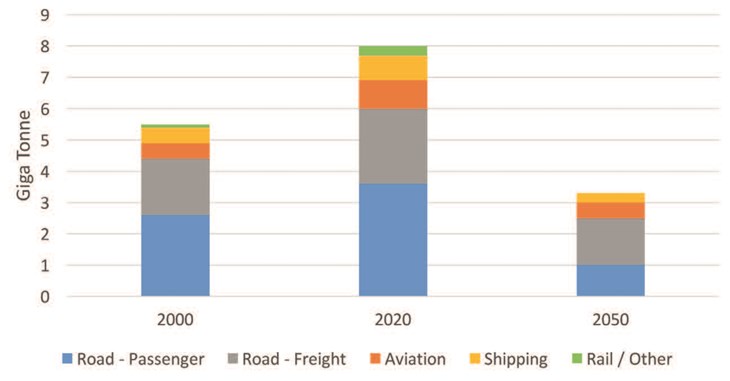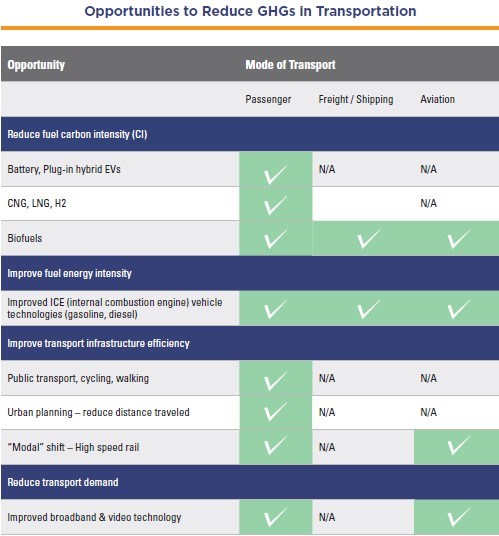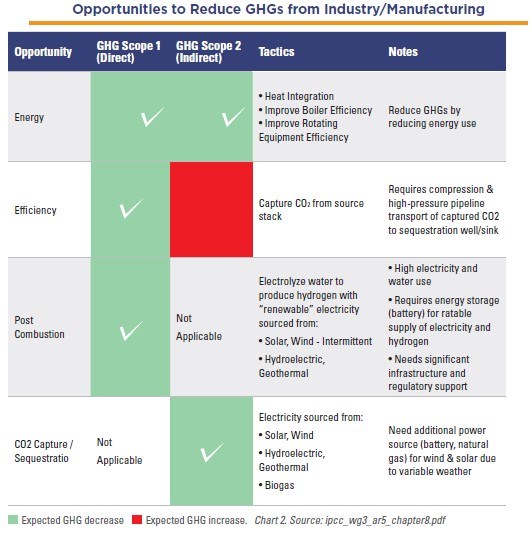However, ‘environmental’ is just one of the 3 pillars of ESG. In Part 1 of this article, insight is provided as to what a greenhouse gases (GHG) are, what their primary sources are and suggests that the greatest opportunity for GHG reductions in the key sources. An explanation of the first key source, Power Generation (Elect /Heat), concluded the article. Now, Part 2 will highlight the remaining key sources.
By Tim Goedeker
Agriculture
Agriculture accounts for about 15% of worldwide GHGs, primarily methane (CH4) and nitrous oxide (N2O), driven by societal behavior.
Ways to reduce GHGs from the agricultural sector include:
- Reduce meat and dairy consumption,
- Develop and produce low carbon meat and dairy production,
- Reduce overall food waste.
Figure 1 shows relative greenhouse gas emissions across the agricultural products.
Production and consumption of beef is the largest source of emissions in this sector (see Figure 2).

Transportation
Transportation represents approximately 14% of world GHGs. Some have forecasted a significant reduction in passenger transport GHGs by 2050 (see Figure 3) from consumer behavior shifts (buying electric vehicles (EVs) instead of gasoline/diesel vehicles) along with a significant transition in the ‘mix’ and ‘mode’ of passenger transport (see Chart 1).
Reduction in GHGs from Transportation could come from:
- Reduced fuel carbon intensity (CI)
- Improved fuel energy intensity
- Improvement in transport infrastructure efficiency
- Reduction in transport demand
Industry / Manufacturing
Industry/manufacturing accounts for approximately 13% of the world’s GHGs. There are several opportunities to reduce greenhouse gases from industrial / manufacturing processes:
- Reduce energy consumption by improving equipment/process energy efficiency,
- Capture and use or sequester combusted (emitted) GHGs (primarily CO2),
- Switch to lower carbon fuel sources (natural gas, blue/green hydrogen, renewable electricity).
See Chart 2 for more details.

Fugitives account for about 6% of the world’s GHGs, consisting primarily as methane (CH4). By environmental standards, fugitive emissions are “those emissions that could not reasonably pass through a stack, chimney, vent, or other functionally equivalent opening.” Fugitive emissions are generally accidental releases of gases, typically from pressurized equipment, due to leaks and other unintended or intermittent gas releases.
Fugitive emissions can be complex and difficult to manage, as gas and vapor leaks are invisible and can easily go undetected. According to the U.S. Environmental Protection Agency (EPA), sources of fugitives are:
- flaring (~35%),
- coke drum vent (~25%),
- furnace stacks (~20%),
- equipment leaks (~20%).
Mitigating fugitive emissions should be prioritized based on size, concentration, and type of emission, with valves accounted for first, due to the large volumes in any given industrial space.
Fugitive emission leak detection and repair programs today involve periodic inspections of process equipment which can include the following methods:
- FID, PID detector – EPA Method 21 – detect gases from <1 meter from sources,
- Optical Gas Imaging (OGI) / Infrared imaging technology – detect gases 1- 20 meters from sources,
- Differential Absorption Lidar (DIAL) technology – detect gases ~200 meters from sources,
- Drones.
Increased frequency of leak detection, near real-time, and improved valve leak reduction technology will lead to fewer fugitive emissions in the environment and less product loss.


Conclusion
References
- China, India, Japan, Russia, United States | Total including LUCF | Greenhouse Gas (GHG) Emissions | Climate Watch (climatewatchdata.org); European Union (27), World | Total including LUCF | Greenhouse Gas (GHG) Emissions | Climate Watch (climatewatchdata.org)
- International Energy Agency.



